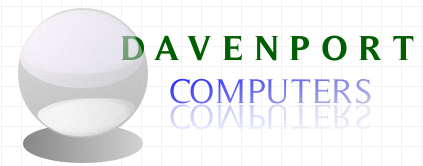 Phone
(916) 607-3152
Phone
(916) 607-3152
|
|
|
|
|
|
||
|
5 things to always do to keep your computer running smoothly
|
You can ward off many computer problems just by following the steps below. Think of it as tuning up your computer yourself. The following tips can help improve your computer's performance and help make your computer run faster. Free software available to help you tune up your computer. First step is to make sure you have antivirus installed and updated. You should only have one anti-virus installed at a time. If you have anti-virus that you paid for, but have not continued and is now outdated, you will have to uninstall it before installing a different or newer version. Do Once
Do Daily/Weekly
Do Monthly Microsoft Fixit Website
|
|
|
You can only have one anti-virus program installed at a time. Otherwise, your computer will slow down as they fight each other. There are many free and excellent programs out there. The one I am currently recommending is Microsoft Security Essentials (MSE). About a year ago, Microsoft made this available for free. Click on this link to go to the Microsoft Website to download and install: microsoft.com - Microsoft Security Essentials. MSE will not run on Windows Servers. For that reason, I have become an authorized AVG reseller. AVG has a free version for workstations, but if you want that version will not run on servers. If your computer is already infected and you are having a tough time cleaning it, I recommend Malwarebytes. Just go to malwarebytes.com, download, install and then allow it to fully scan your computer. This can take a while, but it will be worth the wait.
|
|
|
What is Windows Update? There's an easy, free way to help keep your PC safer and running smoothly. It's called Windows Update. All you have to do is turn it on, and you'll get the latest security and other important updates from Microsoft automatically. Check your settings Setting up Windows Update is simple: Just go to the Microsoft Update website (Windows Update). If you've already got automatic updating turned on, Windows Update in Control Panel will open and show your update status. If it's not yet turned on, you'll be guided through the steps to do so. After that, all the latest security and performance improvements will be installed on your PC quickly and reliably. It's (mostly) automatic When you turn on automatic updating, most updates will download and install without you having to lift a finger. But sometimes Windows Update will need your input during an installation. In this case, you'll see an alert in the notification area at the far right of the taskbaróbe sure to click it. If you don't respond to a Windows Update alert, your PC might end up missing an important download. We recommend that you use automatic updatingóbut if you choose not to, be sure to check for updates at least once a week.
|
|
|
A backup requires that you have your data in more than one location. If your computer gets stolen or dies, you will still have access to your data. Some of my clients backup their data locally and then move it off-site. You can backup to tape or external hard drives easily. Another way my clients are backing up is through the Internet. This automates the backup and ensures that even if the building burns down, you will have your data. Davenport Computers is an authorized reseller of Mozy Backup.
|
|
|
Programs create temporary files primarily for backup purposes. Many programs, such as those included with Microsoft Office, will save a temporary version of a file every few minutes while the original file is open. Then if you have not saved the file and the program unexpectedly crashes or the computer is turned off, there will be a temporary file that was recently saved. Temp files are typically deleted automatically when the program is closed normally, but if the program quits unexpectedly, the temp files are not deleted. However, some temp files are left behind even when a program is quit correctly. This may be due to programming errors that cause temporary files to not be correctly disposed of when an application is quit. These files can accumulate on your hard drive without you even noticing. Finally, Web browsers, such as Internet Explorer, create "Temporary Internet Files" to store user data, including cookies, images from visited Web pages, and the user's browsing history. I like the program CCleaner to clean up temporary files. You can choose which files to allow to delete or just let CCleaner delete it all. I like to keep my cookies, but you may not. And best of all, CCleaner is free. Just go to ccleaner.com to download and install.
|
|
|